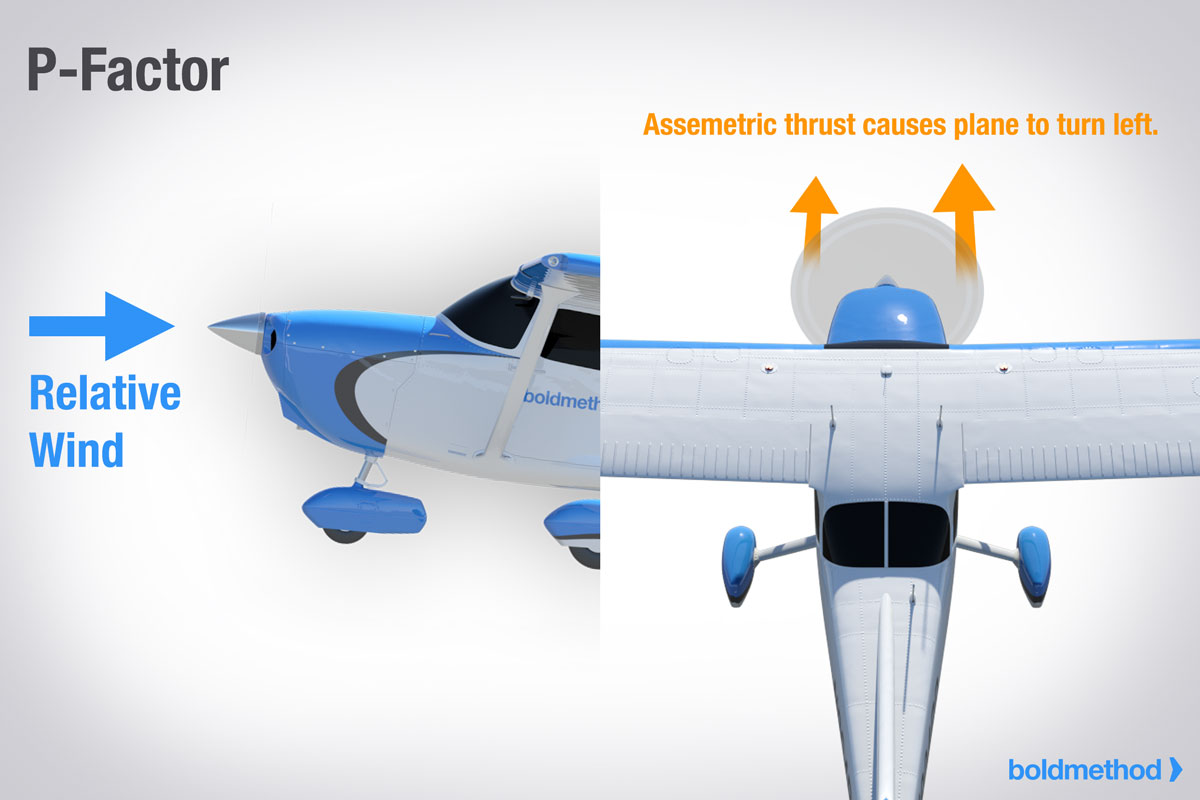|
Newton isn't the only power at play here in the air. One particular effect occurs to the fact that the air entering a propeller will not always enter at an angle that is perpendicular to the blades. The direct result of this - called the angle of attack - is that the size of the 'bite' of the blades of the propeller will vary depending on if the blade is moving upwards or downwards relative to the wind.
In the United States, with clockwise-spinning propellers, the result of this effect is that the downward-moving blade will take a far larger 'bite' of the air when compared to the upward-moving blade. This will, in the same manner as a wing produces more lift with a larger angle of attack, produce more "lift" in the forward direction. Consequently, this "forward lift" is experienced as asymmetric thrust across the propeller, forcing the aircraft to desire to yaw to the left. This effect is most pronounced in slow flight regimes, where the counter-effect of the tail is diminished due to low airspeed, and angle of attack is the greatest due to the low speeds. |
P-factor. (Not a great example image)
https://cdn.boldmethod.com/images/learn-to-fly/aerodynamics/why-you-need-right-rudder-on-takeoff/p-factor-flight.jpg |
Create a free web site with Weebly
